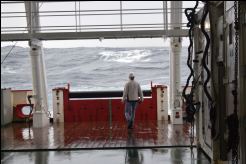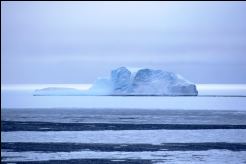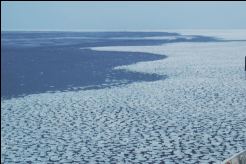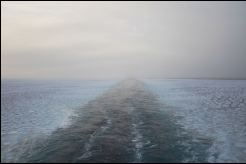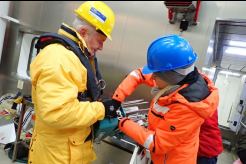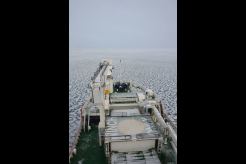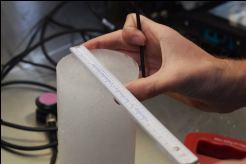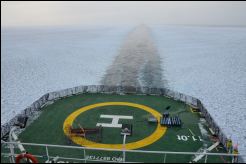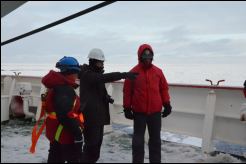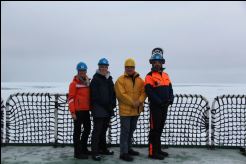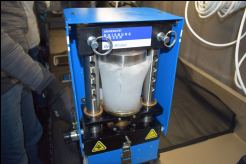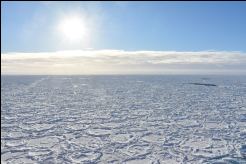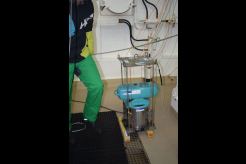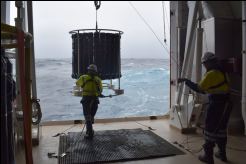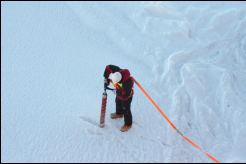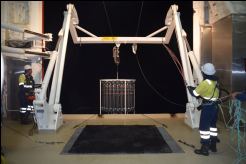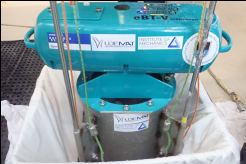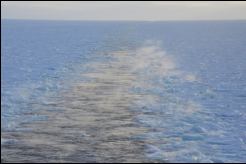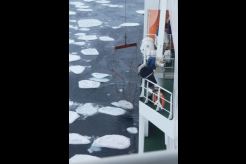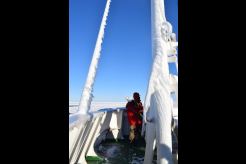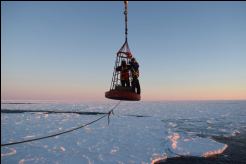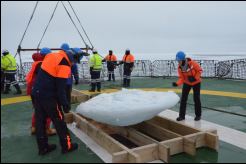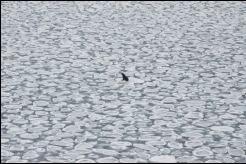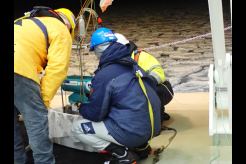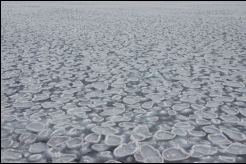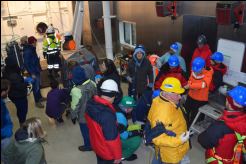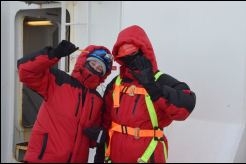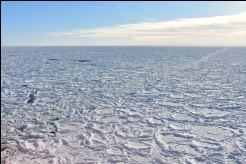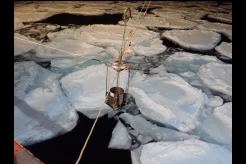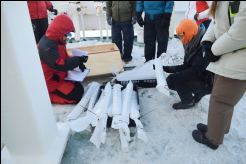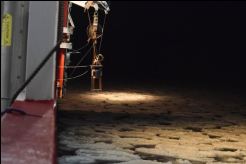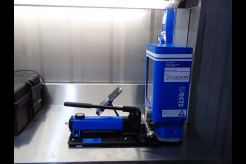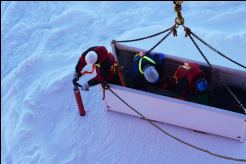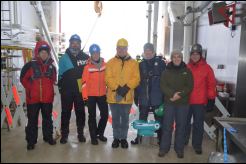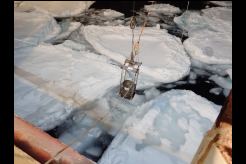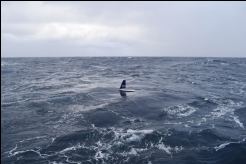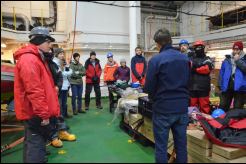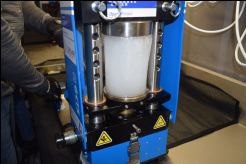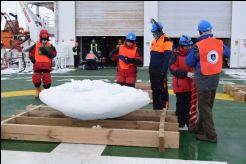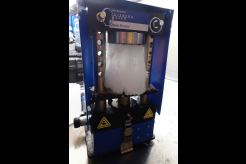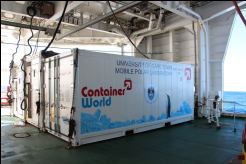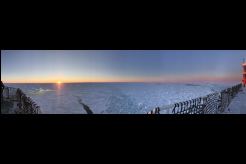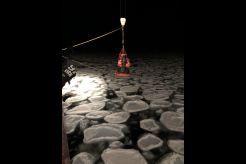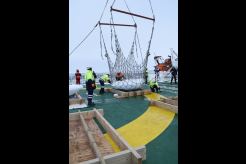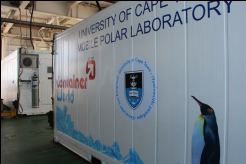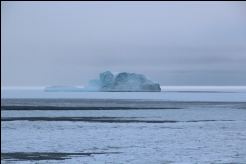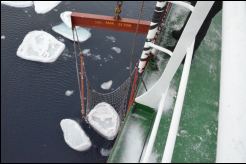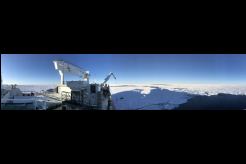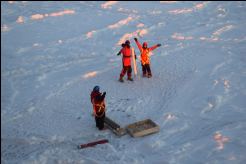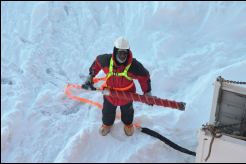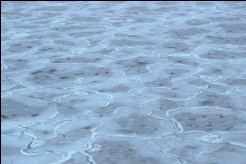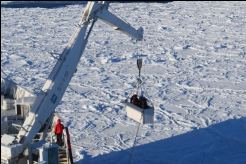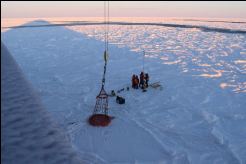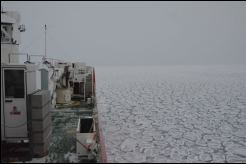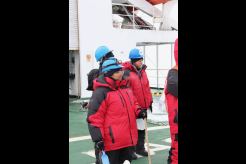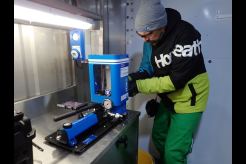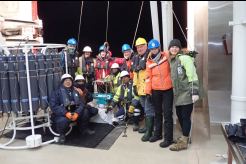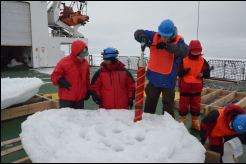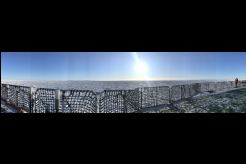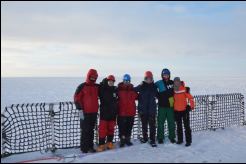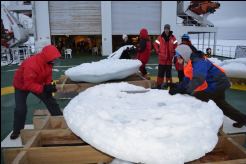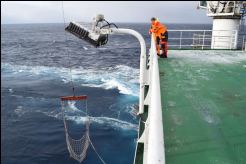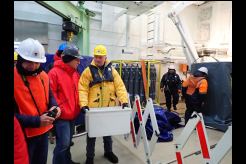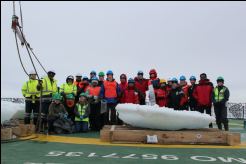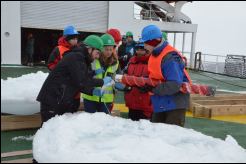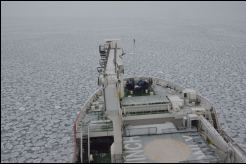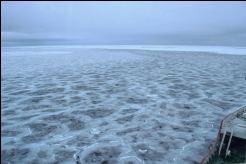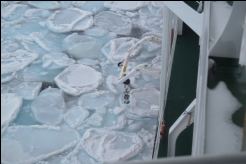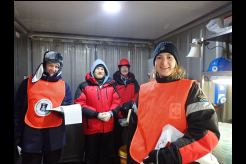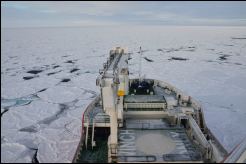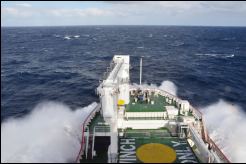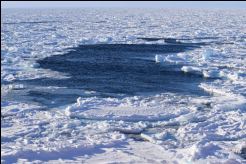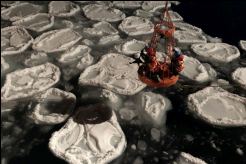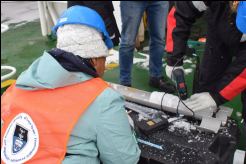Report on the Winter-Cruise 2019
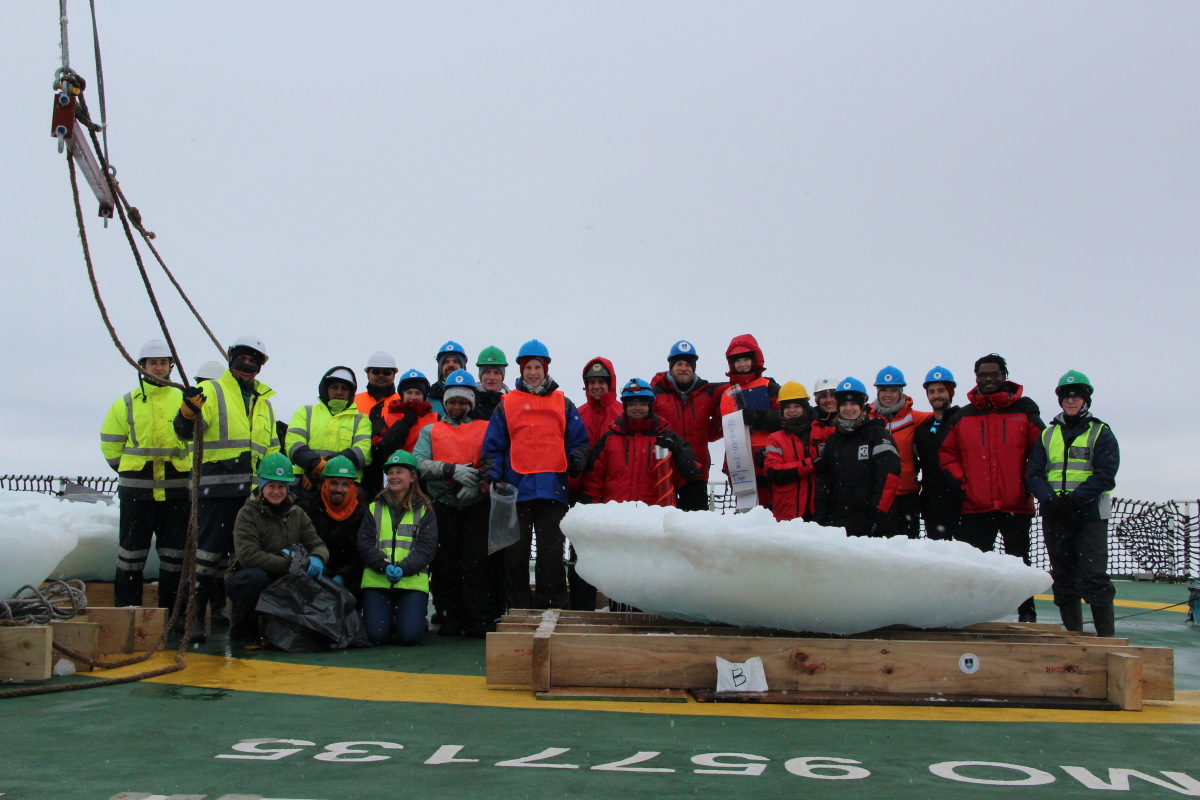
Scientists on their way into the Antarctic ice - SCALE Winter Cruise 2019A journey into the Antarctic sea ice
From mid-July to early August 2019, four scientists from the University of Duisburg-Essen spent three weeks on an expedition to the Southern Ocean and the Marginal Ice Zone (MIZ) of Antarctica. Together with 89 other scientists from 13 nations, they travelled on the South African research vessel S.A. Agulhas II to investigate the properties of sea ice in numerous experiments.
The scientists Dr.-Ing. Tommy Mielke and Felix Paul, B.Sc. from the Institute of Materials Science, as well as Prof. Jörg Schröder and Dr.-Ing. Carina Nisters from the Institute of Mechanics were part of an interdisciplinary project funded by the SA National Antarctic Project (Southern Ocean Seasonal Experiment - SCALE) to investigate the conditions in the Antarctic region in particular during the winter months.
The polar regions of the earth are covered by sea ice, which is - driven by atmospheric movements, wave movements and ocean currents - exposed to a constant dynamic. Sea ice plays an important role in determining the polar climate and is believed to have a significant impact on the world's climate. The forces within the agglomerate of the ice lead to the formation of so-called "pancake" ice. The exploration of this region is an important task for many scientific and engineering disciplines.
The multidisciplinary research project of the Cruise was led by Associate Professor Marcello Vichi, Director of the Marine Research Institute at the University of Cape Town (UCT), and it comprised 17 different research groups with different research emphases from the fields of biology, chemistry and engineering. One of the research teams which is also including the four scientists from the University of Duisburg-Essen was the Sea-Ice Team led by Associate Professor Sebastian Skatulla (UCT). During the expedition, the Sea Ice Group successfully removed cores from both consolidated and pancake ice. These cores were used to determine the physical, chemical, biological and mechanical properties of the ice. Among other things, strength tests, thermal conductivity and salinity tests were carried out. Furthermore, samples of the so-called frazil ice were taken with an apparatus specially designed for this expedition by the Institute of Materials Science. Frazil ice is a mixture of ocean salt water and the first crystalline structures of ice between the ice floes. For this mixture, salt content and temperature and especially viscosity was measured. The Sea Ice team also included electrical engineers from UCT, who used buoys to measure the movements of the ice floes. Another project was the observation of sea ice movements to define the limits of the MIZ.
The SCALE expeditions are funded by the South African National Research Foundation (NRF) through the South African National Antarctic Programme (SANAP), with contributions from the Department of Science and Innovation and the Department of Environmental Affairs.

